Related Research Articles

Miles Dewey Davis III was an American jazz trumpeter, bandleader, and composer. He is among the most influential and acclaimed figures in the history of jazz and 20th-century music. Davis adopted a variety of musical directions in a roughly five-decade career that kept him at the forefront of many major stylistic developments in jazz.
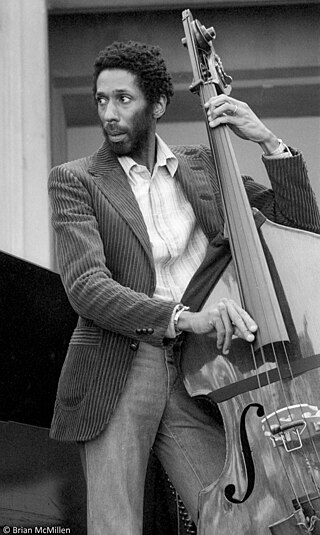
Ronald Levin Carter is an American jazz double bassist. His appearances on 2,221 recording sessions make him the most-recorded jazz bassist in history. He has won three Grammy Awards, and is also a cellist who has recorded numerous times on that instrument. In addition to a solo career of more than 60 years, Carter is well-known for playing on numerous iconic Blue Note albums in the 1960s, as well as being the anchor of trumpeter Miles Davis's "Second Great Quintet" from 1963-1968.

Kind of Blue is a studio album by the American jazz trumpeter and composer Miles Davis. It was released on August 17, 1959 through Columbia Records. For the recording, Davis led a sextet featuring saxophonists John Coltrane and Julian "Cannonball" Adderley, pianist Bill Evans, bassist Paul Chambers, and drummer Jimmy Cobb, with new band pianist Wynton Kelly appearing on one track—"Freddie Freeloader"—instead of Evans. The album was recorded in two sessions on March 2 and April 22, 1959, at Columbia's 30th Street Studio in New York City.
Jazz fusion is a popular music genre that developed in the late 1960s when musicians combined jazz harmony and improvisation with rock music, funk, and rhythm and blues. Electric guitars, amplifiers, and keyboards that were popular in rock and roll started to be used by jazz musicians, particularly those who had grown up listening to rock and roll.
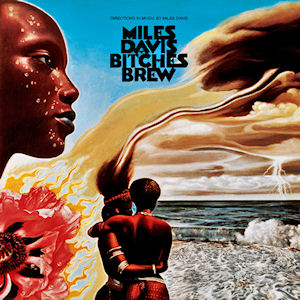
Bitches Brew is a studio album by the American jazz trumpeter, composer, and bandleader Miles Davis. It was recorded from August 19 to 21, 1969, at Columbia's Studio B in New York City and released on March 30, 1970, by Columbia Records. It marked his continuing experimentation with electric instruments that he had featured on his previous record, the critically acclaimed In a Silent Way (1969). With these instruments, such as the electric piano and guitar, Davis departed from traditional jazz rhythms in favor of loose, rock-influenced arrangements based on improvisation. The final tracks were edited and pieced together by producer Teo Macero.

Filles de Kilimanjaro is a studio album by the American jazz trumpeter Miles Davis. It was recorded in June and September 1968 at Columbia 30th Street Studio in Manhattan, New York City, and released on Columbia Records in December of that year in the United Kingdom and in the United States the following February. The album is a transitional work for Davis, who was shifting stylistically from acoustic post-bop recordings with his Second Great Quintet to the jazz fusion of his subsequent "electric period". Filles de Kilimanjaro was well received by contemporary music critics, who viewed it as a significant release in modern jazz. Pianist Chick Corea and bassist Dave Holland appear on two tracks, marking their first participation on a Davis album.

Cookin' with the Miles Davis Quintet is a studio album by the Miles Davis Quintet which was released in July 1957 through Prestige Records. The recording sessions were at Rudy Van Gelder's studio in Hackensack, New Jersey in 1956. As the musicians had to pay for the studio time, their recordings are practically live. Two sessions on 11 May and 26 October 1956 resulted in four albums — this one, Relaxin' with the Miles Davis Quintet, Steamin' with the Miles Davis Quintet and Workin' with the Miles Davis Quintet.

Miles Smiles is an album by the jazz musician Miles Davis. It was released on February 16, 1967 through Columbia Records. It was recorded by Davis and his second quintet at Columbia 30th Street Studio in New York City on October 24 and October 25, 1966. It is the second of six albums recorded by Davis' second great quintet, which featured tenor saxophonist Wayne Shorter, pianist Herbie Hancock, bassist Ron Carter, and drummer Tony Williams.

Jack Johnson is a studio album and soundtrack by the American jazz trumpeter, composer, and bandleader Miles Davis. It was released on February 24, 1971, by Columbia Records.
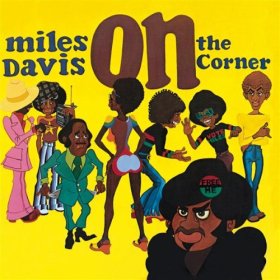
On the Corner is a studio album by the American jazz trumpeter, bandleader, and composer Miles Davis. It was recorded in June and July 1972 and released on October 11 of that year by Columbia Records. The album continued Davis' exploration of jazz fusion, and explicitly drew on the influence of funk musicians Sly Stone and James Brown, the experimental music of Karlheinz Stockhausen, the free jazz of Ornette Coleman, and the work of collaborator Paul Buckmaster.
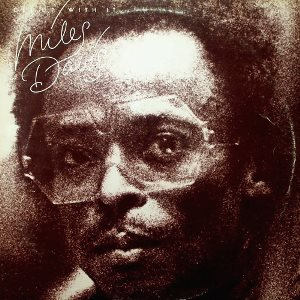
Get Up with It is an album by American jazz musician Miles Davis. Released by Columbia Records on November 22, 1974, it collected previously unreleased material that Davis had recorded between 1970 and 1974, some of which dated from the sessions for his studio albums Jack Johnson (1971) and On the Corner (1972).

Porgy and Bess is a studio album by the jazz musician Miles Davis, released in March 1959 on Columbia Records. The album features arrangements by Davis and collaborator Gil Evans from George Gershwin's 1935 opera of the same name. The album was recorded in four sessions on July 22, July 29, August 4, and August 18, 1958, at Columbia's 30th Street Studio in New York City. It is the second collaboration between Davis and Evans and has garnered much critical acclaim since its release, being acknowledged by some music critics as the best of their collaborations. Jazz critics have regarded the album as historically important.
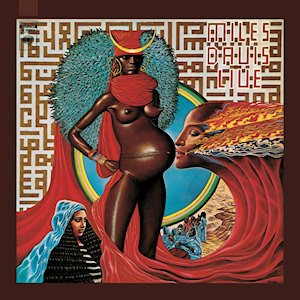
Live-Evil is an album of both live and studio recordings by the American jazz musician Miles Davis. Parts of the album featured music from Davis' concert at the Cellar Door in 1970, which producer Teo Macero subsequently edited and pieced together in the studio. They were performed as lengthy, dense jams in the jazz-rock style, while the studio recordings consisted mostly of renditions of Hermeto Pascoal compositions. The album was originally released on November 17, 1971.

Doo-Bop is the final studio album by American jazz trumpeter Miles Davis. It was recorded with hip hop producer Easy Mo Bee and released posthumously on June 30, 1992, by Warner Bros. Records. The album was received unfavorably by most critics, although it won a Grammy Award for Best R&B Instrumental Performance the following year.

Ascenseur pour l'échafaud is an album by the jazz musician Miles Davis. It was recorded at Le Poste Parisien Studio in Paris on December 4 and 5, 1957. The album features the musical cues for the 1958 Louis Malle film Ascenseur pour l'échafaud.

Pangaea is a live album by American jazz trumpeter, composer, and bandleader Miles Davis. It was originally released as a double album in 1976 by CBS/Sony in Japan.
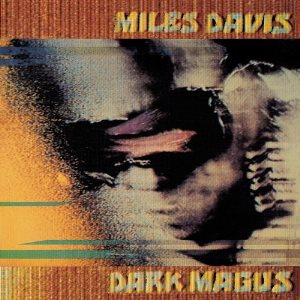
Dark Magus is a live double album by the American jazz trumpeter, composer, and bandleader Miles Davis. It was recorded on March 30, 1974, at Carnegie Hall in New York City, during the electric period in Davis' career. His group at the time included bassist Michael Henderson, drummer Al Foster, percussionist Mtume, saxophonist Dave Liebman, and guitarists Pete Cosey and Reggie Lucas; Davis used the performance to audition saxophonist Azar Lawrence and guitarist Dominique Gaumont. Dark Magus was produced by Teo Macero and featured four two-part recordings, titled with the Swahili numerals for numbers one through four.

1958 Miles is a compilation album by American jazz musician Miles Davis, released in 1974 on CBS/Sony. Recording sessions for tracks that appear on the album took place on May 26, 1958, at Columbia's 30th Street Studio and September 9, 1958, at the Plaza Hotel in New York City. 1958 Miles consists of three songs featured on side two of the LP album Jazz Track, which was released in November 1959, one song from the same session not appearing in the album, and three recordings from Davis' live performance at the Plaza Hotel with his ensemble sextet. The recording date at 30th Street Studio served as the first documented session to feature pianist Bill Evans performing in Davis' group.
Thomas John Ranier is an American instrumentalist who primarily plays piano but also saxophone and clarinet. As a jazz artist he has recorded widely under his own name and as a sideman for Warner Bros., Concord Records and several other labels. He has been prominent in the film, television, and music recording industry since the 1970s. He has played keyboards, woodwinds and writing music for a long list of assignments, including Grammy, Academy Award, Emmy, and Golden Globe winning media and soundtracks for artists such as Barbra Streisand, Shirley Bassey, Michael Feinstein, Christina Aguilera, Joe Pass, Plácido Domingo, Barry Manilow, Natalie Cole, and many others. As a pianist and jazz artist, "(his) personal approach mixes aspects of Bud Powell's complexity, Oscar Peterson's ardent swing and Bill Evans' exploratory harmonies."
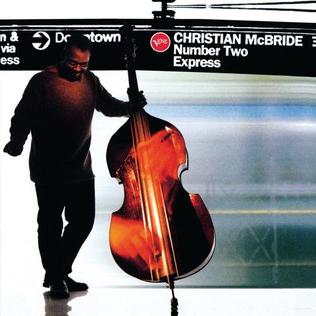
Number Two Express is the second studio album by the American jazz bassist Christian McBride. It was recorded in 1995 and released by Verve Records the following year. The album peaked at #23 in the Billboard Jazz Albums chart.
References
- ↑ LA Times
- ↑ Jazz Times , Volume 28, Issues 6-10, I. Sabin, 1998
- ↑ Cole, George (2007). The Last Miles: The Music of Miles Davis, 1980-1991. University of Michigan Press. p. 402. ISBN 978-0-472-03260-0.
- ↑ Cabbage Rabbit Review.